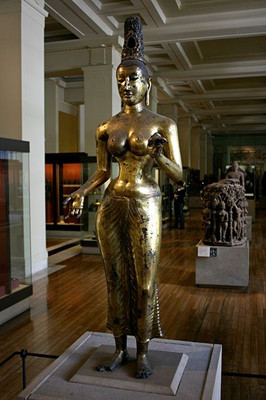Unfortunately, nothing is known about how or when the statue was later found, nor how it came to be owned by the then Governor of Ceylon, the soldier Sir Robert Brownrigg, who brought Tara to Britain. Ceylon had been taken over by the British from its Dutch rulers during the Napoleonic wars, and in 1815 Robert Brownrigg had conquered the last remaining independent Sri Lankan kingdom on the island.
不幸的是,没有人知道它从何地出土,又是如何来到他手里的。早先,在拿破仑战争期间,英国从荷兰手里接管了锡兰。1815年,布朗里格征服了岛上最后一个独立王国。1822年,他将这座度母雕像带到了英国。
Many centuries before, the island had abandoned the particular strand of Buddhism in which Tara had played such a prominent part, and her statue may well have been removed from the temple and buried for safekeeping during that religious upheaval. But if no longer revered in Sri Lanka, Tara is in many places very much a living force, especially in Nepal and Tibet. And today millions of people, all over the world, still turn-as they did in Sri Lanka 1,200 years ago-to Tara, to see them through.
数个世纪以前,斯里兰卡居民遗弃了度母占主导地位的独特佛教派系。在宗教纷争中,为了保全这座铜像,有人将它从庙里移出来埋到地下。度母在斯里兰卡的地位已不复当年,但她在尼泊尔和中国西藏等地仍举足轻重。现今世界上还有数百万人,一如1200年前的斯里兰卡信众, 向度母祈求佑护。
来源:可可英语 //m.moreplr.com/Article/201512/415725.shtml












